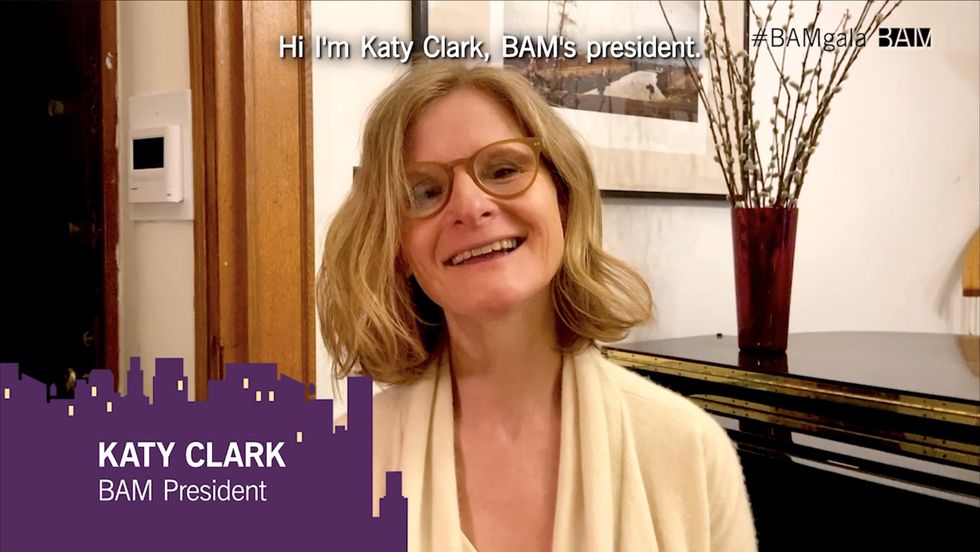The Dos and Don'ts of Putting on a Virtual Gala
Galas are typically red carpet, black tie, elevated (and sometimes over the top) opportunities for nonprofit philanthropic communities to don their evening wear in the name of a good cause. However, the disco ball backdrop of the Brooklyn Academy of Music’s gala this year was replaced by living room bookshelves.
Like everything else these days, annual fundraising galas have either been canceled or—understandably now that most companies are without ticket sales—have gone virtual due to the coronavirus pandemic.
We spoke with three arts organizations on how their virtual galas went, asking about what worked to fundraise, what didn’t and what are some practical how-tos for adapting your own fundraising efforts to an online model.
Do Honor Your Relationships
Had Smuin Ballet canceled its gala one day earlier, it would have gotten a catering refund. As it was, they were stuck with contracts for both the food and the venue. Especially if you work with repeat vendors, this is the time to leverage those relationships. Artistic director Celia Fushille explains, “The venue worked with us to let us postpone for one year.” Building further goodwill in the community, Smuin paid it forward by donating much of the unused food to local shelters.
 BAM’s virtual gala
BAM’s virtual gala
Getty Images, Courtesy BAM
Do Consider The Benefits of Being Private or Public
While many organizations choose to keep their galas private and exclusive for donors, others take advantage of the potential to reach a bigger audience. Brooklyn Academy of Music, for instance, made the link to its annual star-studded event public. “We had sold quite a lot of the tables and tickets beforehand,” president Katy Clark explains. “And I think if we were doing this from scratch—trying to raise that amount of money virtually—you’d have to come up something within the event that was a little more exclusive.” BAM capped its evening with an interactive Zoom dance party with 350 active participants who chose to keep their cameras on and 1000 spectators.
If you aren’t used to livestreaming technology, it might be better managed in a private setting where numbers are smaller. A private gala could also incentivize regular patrons to bring other potential donors into the fold. For example, Streb Extreme Action has a group that flies to New York from Los Angeles each year specifically for the company’s gala but isn’t usually able to fill its whole table. This year, the LA group invited new guests who wouldn’t typically have been able to attend but who were eager to get involved virtually.
Don’t Underestimate Technical Glitch Potential
Streb and BAM both prerecorded their performances and speeches to mitigate some of the live-streaming risk. Make sure you pick a streaming platform that has the right features for your event, and be sure to practice beforehand. For example, you may want to prevent guests from being able unmute themselves without your permission. (You don’t want any unexpected “Zoom bombs.”)
Streb company manager Shannon Reynolds explains another strategy decision: “One of the conversations we had from day one was breaking out into Zoom rooms, and that seemed very terrifying.” Although the company skipped this extra complication this year, Reynolds says it is something Streb would reconsider in the future—in the hopes of creating more personalized one-on-one engagement among the guests.
Do Choose the Right Offers
Under the current circumstances, certain in-person auction offers are obviously not the best choice. “We had tickets to Warriors games and to an Eagles concert. So all of these fantastic auction items couldn’t be used,” Fushille explains.
The clear auction category favorite? Physical objects like art. Even before the pandemic, BAM has been holding its annual art auction online every year through Artsy.com. This year, BAM also included an actionable link and QR code throughout the evening where audience members could click or point their phones to donate. This strategy pulled in about 300 individual donations.
Smuin streamed a prerecorded performance video in conjunction with launching a donation page. Though the company offered refunds to ticket holders, a majority of patrons happily converted their ticket price into a donation, raising a total of $267,000. This was about half of the company’s original goal, but it did exceed their expectations for a virtual fundraiser. Once travel is deemed safe again, Smuin plans to open up an online auction for its experience-related offers and also decadent home-baked cakes donated by company members annually.
 Home baked cakes are favorite auction items at Smuin Ballet galas. Here, Terez Dean in 2018
Home baked cakes are favorite auction items at Smuin Ballet galas. Here, Terez Dean in 2018
Drew Altizer Photography, Courtesy Smuin
Do Hire Consultants
BAM had its own artistic director for the event who carefully planned how to adapt the artistic portion to the virtual world. She paired each honoree with an artist or group. For example, Alvin Ailey American Dance Theater’s Hope Boykin choreographed a dance to honoree Zadie Smith’s writing read aloud.
Reynolds says that Streb worked with a producer, which she would highly recommend to make sure everything runs smoothly while you focus on your guests. After all, virtual does not mean inferior. Production quality and a professional, enjoyable experience still matter.
Don’t Get Hung Up On The Money
In a conversation taped by Meridian Community, American Ballet Theatre artistic director Kevin McKenzie admitted that the company’s virtual gala didn’t meet its fundraising goal. But he saw the silver lining in a different set of numbers: “What was very gratifying is that there were like 50 thousand viewers. We don’t reach that many people in the course of the year performing in the theater.”
Clark says that BAM raised about million dollars all told—mostly thanks to selling tables beforehand. But she adds that the experience has actually broadened her idea of what a gala can be. She is even considering virtual components, like the Zoom dance party, for BAM galas going forward. “I think it was successful as a fundraiser in its own right in a sort of more modest crowd-sourced way,” she says.
Clark underlines the emotional benefits of a virtual gala celebration, as well. “It’s not just about the money for me,” she says, “It’s about the bringing together of your philanthropic community and celebrating people who have done great things for your institution. And those things are really, really important, regardless of how much you raise.”





